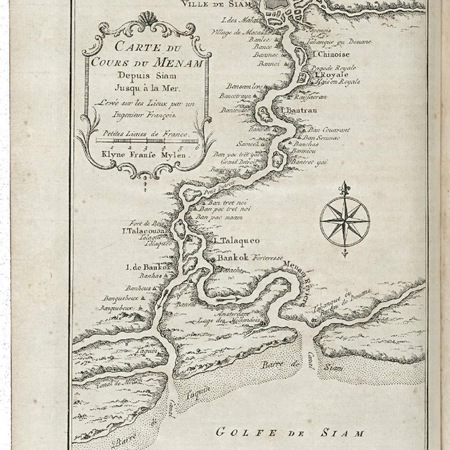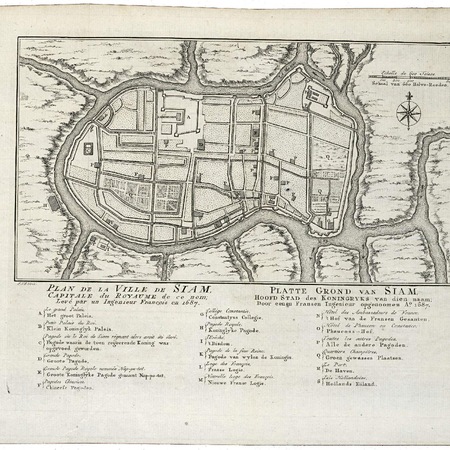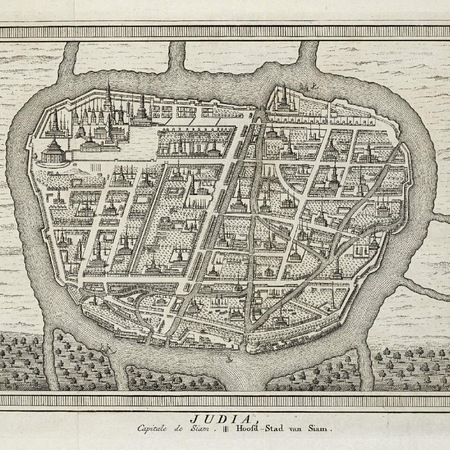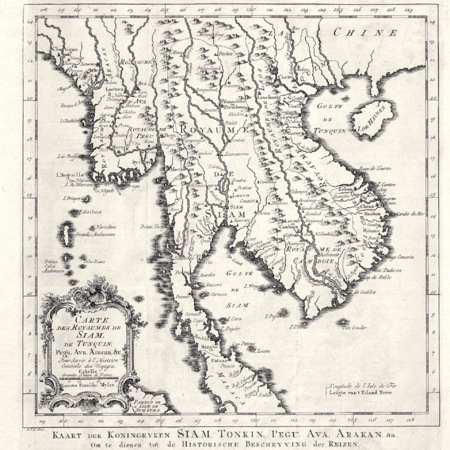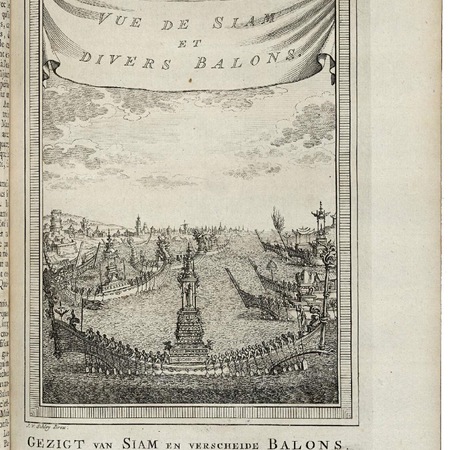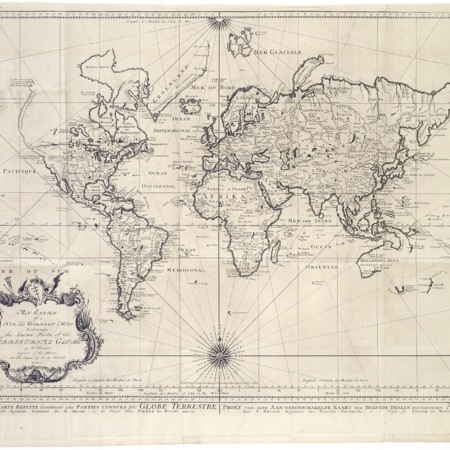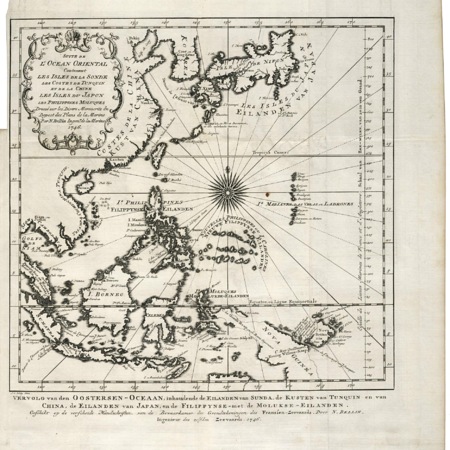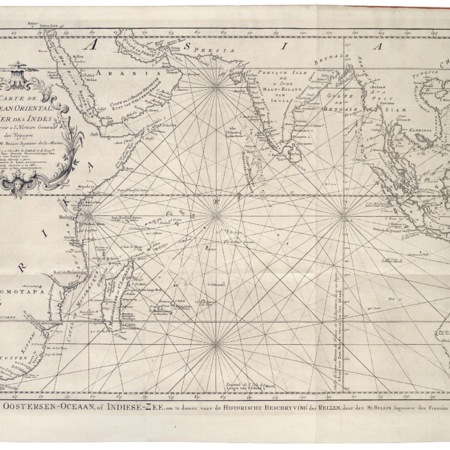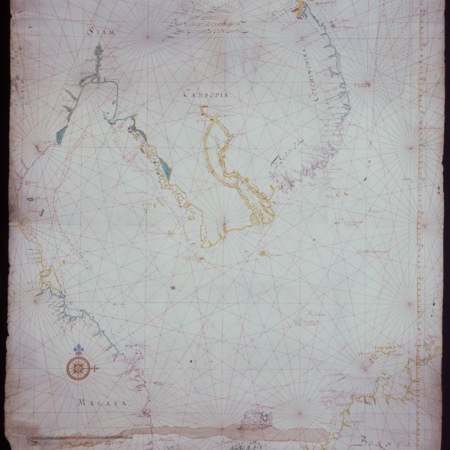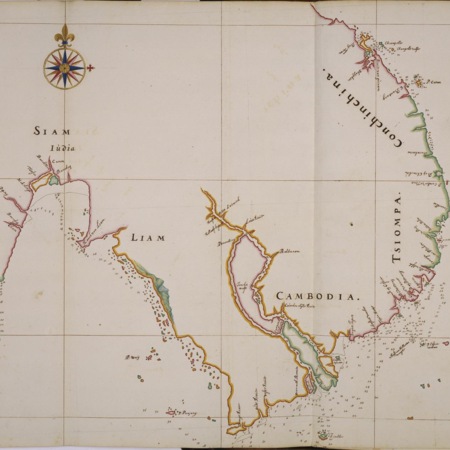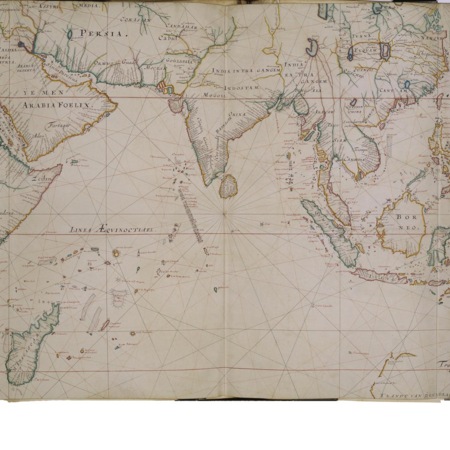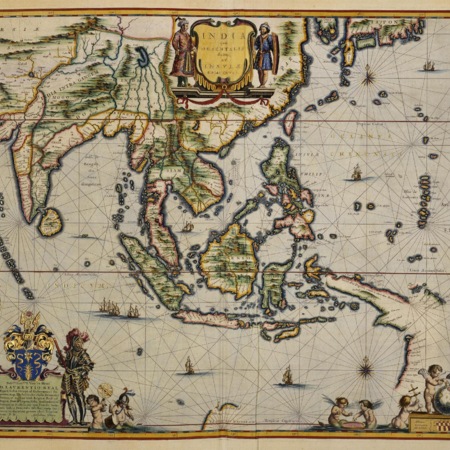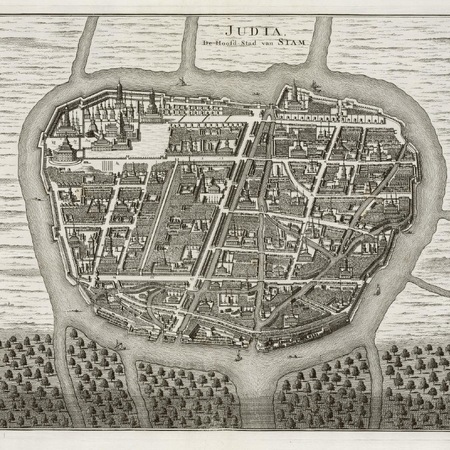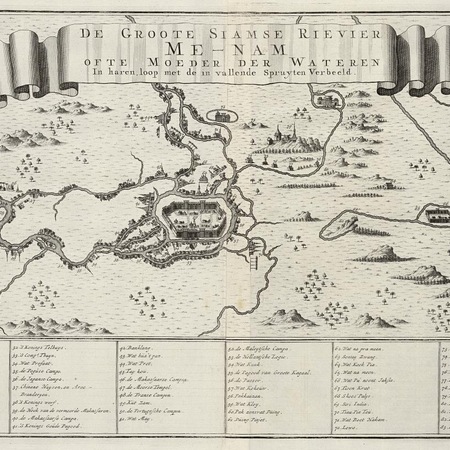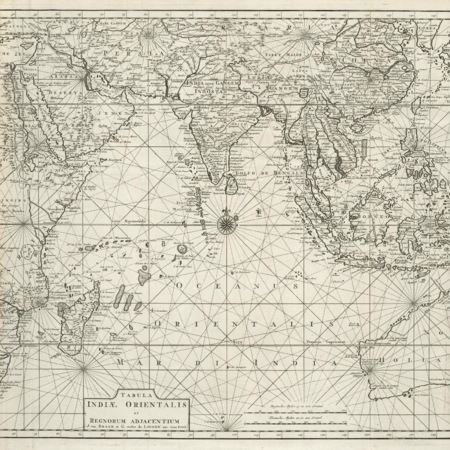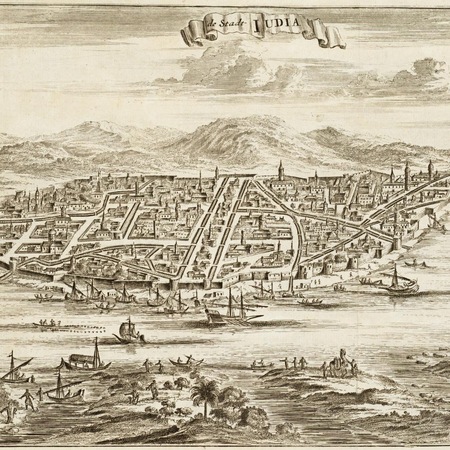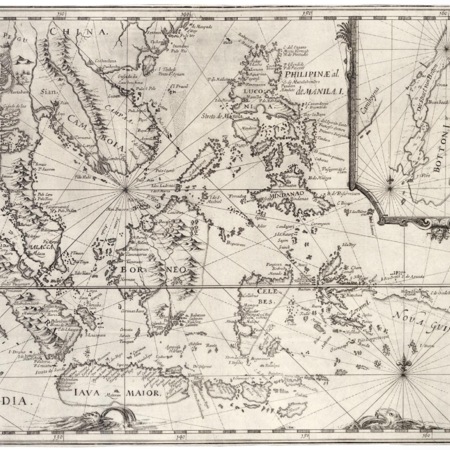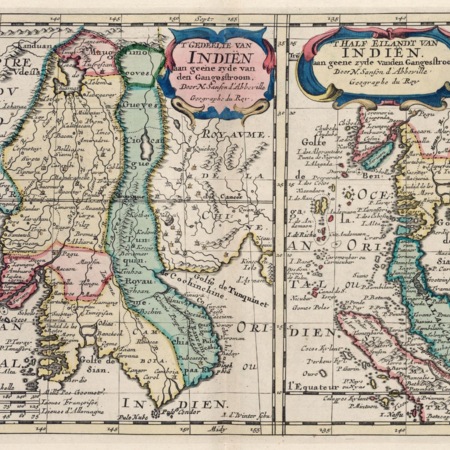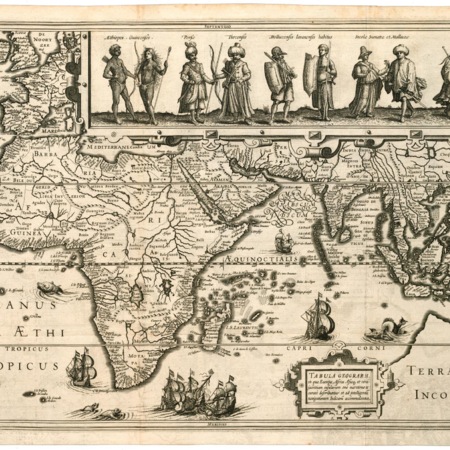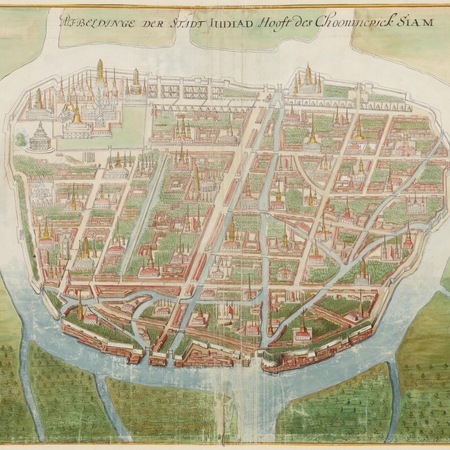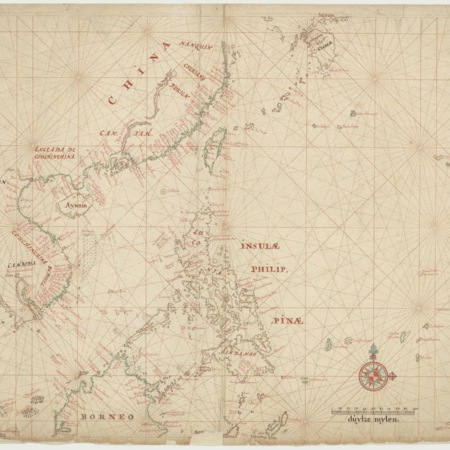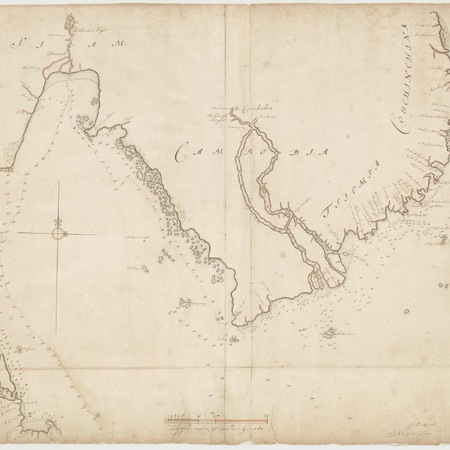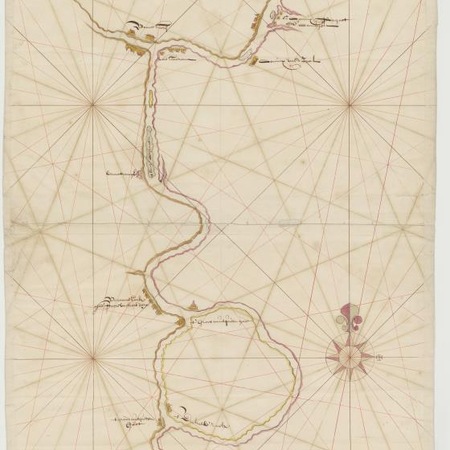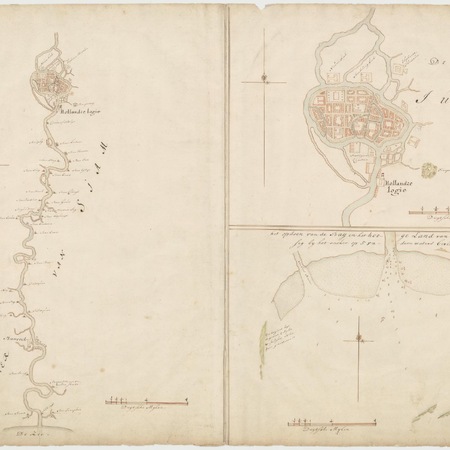Ayutthaya
known as Judea during the VOC period
was the capital of the kingdom of Siam, today's Thailand. Siam was very important to the VOC, and so in 1608 the Company opened a trading post there concentrating primarily on the trade in sappan wood
which was used as dye
as well as tin and animal pelts. The VOC sold most of its pelts to Japan.In 1609 the king of Siam sent a delegation to the Dutch Republic to try and improve relations with the VOC. Although this initial meeting met with little enthusiasm from the Dutch side, the ties between the Company and Siam gradually became stronger. Indeed, in the mid-17th century the VOC even had a shipyard in Ayutthaya where a Dutch shipwright built ships on the European model, with the help of Siamese labour.In 1650 the VOC's ships seized control of the River Menam, on which Ayutthaya is situated. This enabled the Company to force the king of Siam to agree to a treaty. One of the provisions was that the Chinese were no longer to be admitted to Siamese territory; furthermore, the king was required to guarantee the free export of all animal pelts.From 1630 there was an 'opperhoofd' or supervisor resident in Ayutthaya responsible for trade in Siam. This trading post closed and reopened several times before finally closing for good in 1762.
